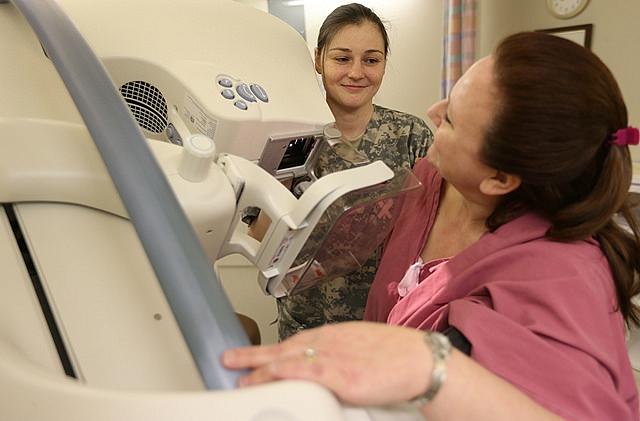Task force's recommendations on mammograms are lost in the noise

A few women in their 40s have mentioned to me recently that they were going in for their annual mammogram.
“Annual?” I asked one. “But you’re not even 50, and the recommendation even after that is every two years.”
“That’s what my doctor recommended,” she said. In some cases, they had received a form letter in the mail asking them to come in — same as the year before.
As most health writers know, the U.S. Preventative Services Task Force, a group of independent experts that is widely considered the gold standard for prevention guidelines, declared in 2009 that years of promoting annual mammograms for women 40 to 69 should not be the norm.
For women under 50, the task force wrote that women and doctors should talk about the benefits and risks, and decide whether and how to start screening every other year:
The decision to start regular, biennial screening mammography before the age of 50 years should be an individual one and take patient context into account, including the patient’s values regarding specific benefits and harms.
For women 50 to 74, the task force recommended a shift to screening every two years, stating:
The USPSTF recommends biennial screening mammography for women 50-74 years.
Beyond that, the task force did not recommend screening at all. In all cases, the overarching idea was that too frequent and too widespread screening can lead to false positives, unnecessary treatments, and anxieties. More screening does not necessarily save more people from developing or dying from cancer. Instead, the task force said, screening should be targeted at women at the highest risk, where the benefits of screening were more clearly proven. The task force wrote:
The harms resulting from screening for breast cancer include psychological harms, unnecessary imaging tests and biopsies in women without cancer, and inconvenience due to false-positive screening results. Furthermore, one must also consider the harms associated with treatment of cancer that would not become clinically apparent during a woman's lifetime (overdiagnosis), as well as the harms of unnecessary earlier treatment of breast cancer that would have become clinically apparent but would not have shortened a woman's life. Radiation exposure (from radiologic tests), although a minor concern, is also a consideration.
The Agency for Healthcare Research and Quality (AHRQ) brings the task force together from a range of scientific fields to provide guidance to the federal government. The task force makes an annual report to Congress with recommendations. Usually what the task force says quickly moves into clinical practice.
But this was 2009 and the height of the fight over Obamacare. Members of Congress used the recommendations to claim that the government was going to try to rob women of much needed care for the sake of saving money. Rep. Rodney Frelinghuysen (R-NJ), had a typical response:
Some questioned whether these new guidelines were designed more to control spending than to improve health. These recommendations may cause fewer doctors to recommend mammograms to their patients which will result in fewer women getting screened in their 40s. And although the state of New Jersey requires that insurance companies cover mammogram screenings, I fear that this move may prompt insurers in other states to deny coverage for this procedure.
In the United States, six years after the task force made its recommendations, mammograms and language urging regular mammograms are still more common than the recommendation that women be screened only every other year after age 50.
Here’s what the American Cancer Society recommends:
- "Yearly mammograms starting at age 40 and continuing for as long as a woman is in good health."
- "Clinical breast exam (CBE) about every 3 years for women in their 20s and 30s and every year for women 40 and over."
What’s a clinical breast exam? It’s having a doctor personally examine a woman’s breasts. The U.S. Preventative Services Task Force actually recommended against these types of exams altogether, saying that the evidence was insufficient to show that they did any good.
The American Cancer Society recommendations are the dominant force. Here’s the American College of Obstetricians and Gynecologists, for example: “Women 40+ get your yearly mammogram!”
This would be less surprising were the task force the lone voice in the wilderness. But in 2014, a study in the British Medical Journal provided even more evidence that annual mammograms were not helpful and potentially harmful. Gina Kolata summarized the study in The New York Times:
One of the largest and most meticulous studies of mammography ever done, involving 90,000 women and lasting a quarter-century, has added powerful new doubts about the value of the screening test for women of any age. It found that the death rates from breast cancer and from all causes were the same in women who got mammograms and those who did not. And the screening had harms: one in five cancers found with mammography and treated was not a threat to the woman's health and did not need treatment such as chemotherapy, surgery or radiation.
The result is that there’s an incredible amount of noise out there but no clarity for women. For clarity to emerge, though, I would urge health reporters to see what their local health systems, insurers, and schools of medicine are saying. Ask them, “What do you recommend?” Then ask, “Why?”
[Photo by Army Medicine via Flickr.]
